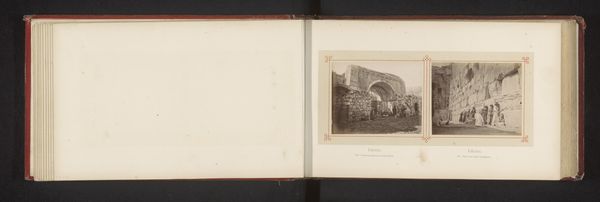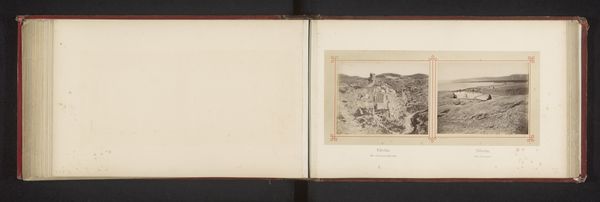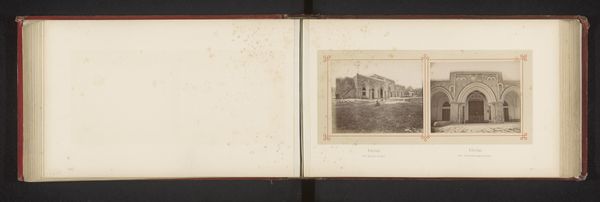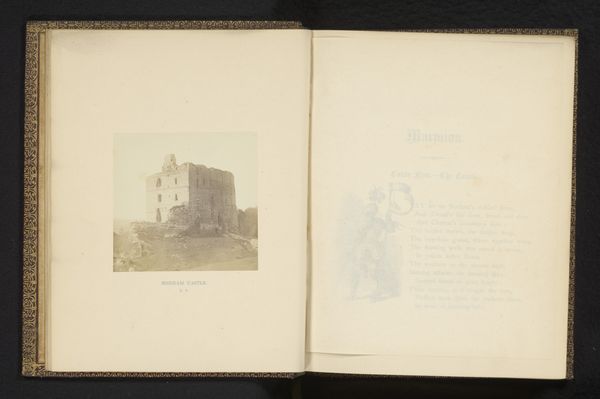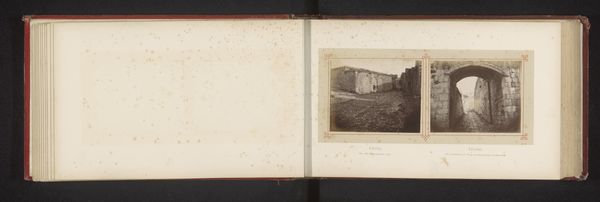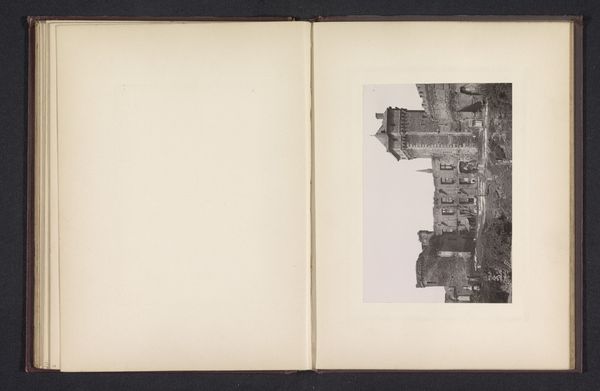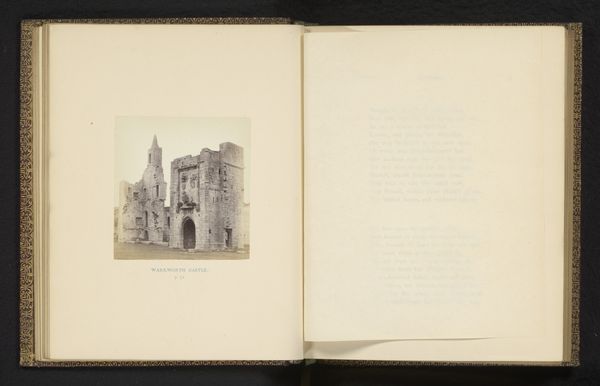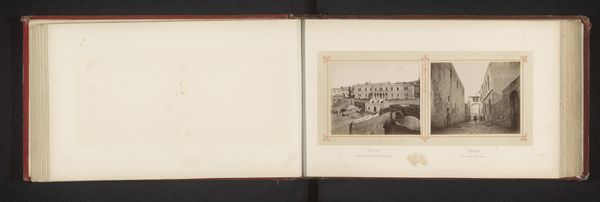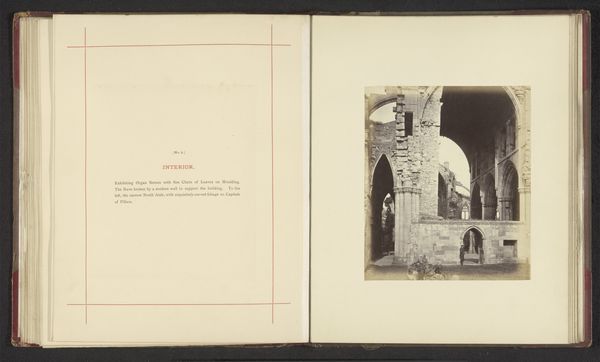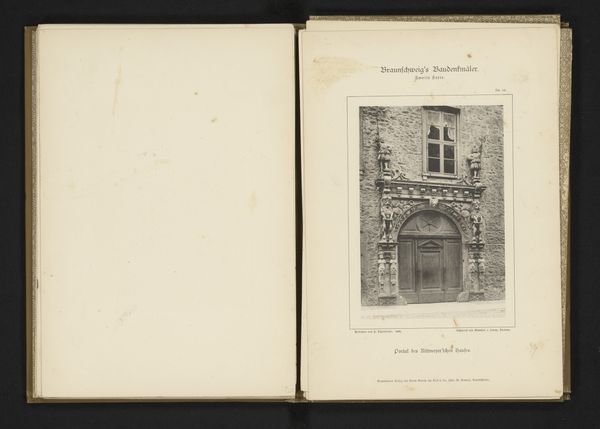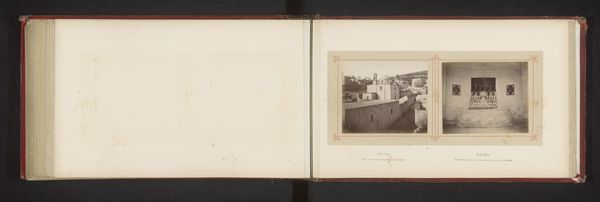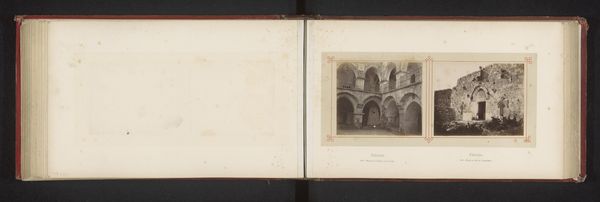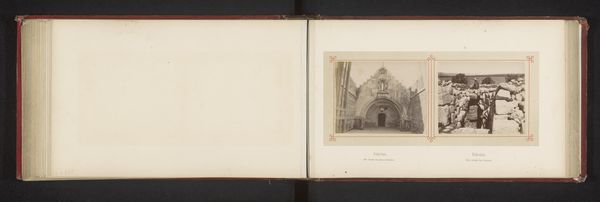
print, photography, albumen-print
#
aged paper
#
homemade paper
#
ink paper printed
# print
#
hand drawn type
#
landscape
#
photography
#
hand-drawn typeface
#
fading type
#
orientalism
#
thick font
#
cityscape
#
white font
#
golden font
#
albumen-print
#
historical font
Dimensions: height 77 mm, width 97 mm
Copyright: Rijks Museum: Open Domain
Editor: We’re looking at Fèlix Bonfils’ "View of the Jaffa Gate in Jerusalem," created before 1878. It’s an albumen print, a photographic print presented in an album page, housed at the Rijksmuseum. It gives off this feeling of distant history. What stands out to you? Curator: Instantly, I'm struck by how this image captures a place heavy with symbolic weight. Jaffa Gate itself, the entry to Jerusalem, speaks of thresholds and journeys, of entering a space both physical and spiritual. Look closely – what do you feel emanating from these ancient stones? Editor: There's definitely a sense of permanence, but also... vulnerability, I guess? Knowing the history, I can't help but feel the weight of conflict connected with the place. Curator: Exactly! This photo was taken during a period when the West was increasingly interested in the "Orient." How do you think the framing—the city juxtaposed with the gate itself—plays into that cultural fascination? The "Orient" was the place of exotic, yet classical imagery. Editor: That’s interesting. The gate becomes like a frame *within* a frame. Almost like a portal to another time and space for European viewers, removed from their everyday lives. Curator: Precisely! Bonfils’ photograph taps into a cultural memory, an idealized and perhaps romanticized version of Jerusalem. Consider, too, the very *act* of photography then - a new technology capturing an ancient place, creating a fresh visual dialogue that continues even now. What’s more powerful: the gate, or the modern representation of the gate? Editor: I'd never considered it that way. Now, looking at it again, it’s more about how the image became this symbol itself, layered with new meaning as its transferred across the globe for centuries. It is amazing how Bonfils became the image he portrayed. Curator: And that continuous interpretation keeps the image, and its embedded cultural symbolism, eternally vibrant.
Comments
No comments
Be the first to comment and join the conversation on the ultimate creative platform.
